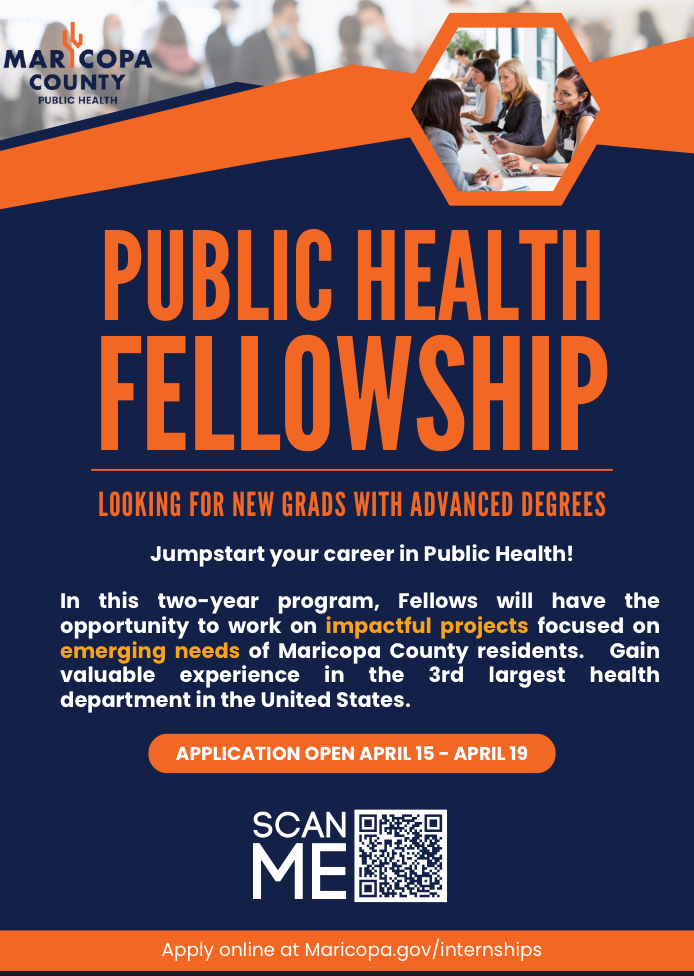Maricopa County Public Health Accepting 2-Year Paid Fellowship Applications
Maricopa County Department of Public Health is now accepting applications for their paid Fellowship Program! This two-year program provides recent graduates with advanced degrees an opportunity for a hands-on learning experience in a diverse and thriving public health environment.
Public Health Fellows will work with MCDPH teams to address the emerging needs of Maricopa County residents. Fellows can expect to gain exposure to county operations, actively contribute to impactful and evidence-based initiatives, receive personalized mentorship, and take part in ongoing professional development.
Applications can be found at Public Health Internships and Fellowship | Maricopa County, AZ.
Fellows:
- Receive full pay & benefits;
- Work with internal projects to execute initiatives aimed at current public health issues in our communities;
- Receive continuous support and mentorship from Fellowship Coordinator and Project Point of Contact;
- Be a part of a fellowship cohort; and
- Transition to Senior status in year two when new Junior Fellows join the program.
Candidates are encouraged to apply soon as this application will be open for a limited time. You can contact MCDPH Fellowship Coordinator Lisa Polovin at Lisa.Polovin@Maricopa.gov
Apply Here
______________________________________________________
Pima County Health Department Internships
Pima County Health Department has 10 paid summer internship positions open in Epidemiology, Consumer Health Vector; Clinical Services; Community Mental Health, Addiction, and Injury; Policy, Equity and Resilience; Cross Functional Operations & the Director’s Office.
Please use the link below to apply. These internships require a commitment of 400 hours minimum from May 28, 2024 – August 2, 2024.






